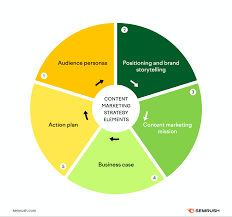Elevate Your Brand with a Boutique Public Relations Agency
The Power of Boutique Public Relations Agencies
In the fast-paced world of public relations, boutique agencies are making a significant impact. These smaller, specialised firms offer a unique approach to PR that sets them apart from larger, more traditional agencies.
One of the key advantages of working with a boutique PR agency is the personalised attention and tailored strategies they provide. With a smaller client roster, boutique agencies can focus on building strong relationships and delivering customised solutions that meet the specific needs of each client.
Another benefit of boutique PR agencies is their agility and flexibility. They are able to adapt quickly to changing market dynamics and emerging trends, allowing them to stay ahead of the curve and deliver innovative campaigns that resonate with target audiences.
Boutique PR agencies also tend to have a team of highly skilled professionals with diverse backgrounds and expertise. This diversity enables them to offer a wide range of services, from media relations and influencer partnerships to content creation and crisis management.
Furthermore, boutique agencies often have a deep understanding of niche industries and markets. This specialised knowledge allows them to provide valuable insights and strategic guidance that can help clients differentiate themselves in competitive landscapes.
Overall, boutique public relations agencies offer a fresh perspective and a hands-on approach that can drive meaningful results for clients. Their creativity, agility, and personalised service make them a powerful choice for businesses looking to elevate their brand presence and reputation in today’s dynamic media landscape.
Top 7 Advantages of Choosing a Boutique Public Relations Agency
- Personalised attention and tailored strategies
- Agility and flexibility to adapt quickly to market changes
- Highly skilled professionals with diverse expertise
- Specialised knowledge of niche industries and markets
- Strong relationships with clients due to smaller client roster
- Innovative campaigns that resonate with target audiences
- Creative approach to driving meaningful results for clients
Challenges of Boutique Public Relations Agencies: Resource Limitations, Network Constraints, and Reputation Issues
- Limited resources compared to larger agencies, which may impact the scale of projects they can handle.
- May have a smaller network of media contacts and industry connections, potentially limiting media coverage opportunities.
- Less established reputation and brand recognition compared to well-known larger agencies, which could affect credibility in the eyes of some clients.
Personalised attention and tailored strategies
One of the standout advantages of partnering with a boutique public relations agency is the unparalleled level of personalised attention and tailored strategies they offer. With a smaller client base, boutique agencies can dedicate more time and resources to understand the unique needs and goals of each client. This personalised approach allows them to craft bespoke communication strategies that are specifically designed to resonate with target audiences, maximise impact, and achieve tangible results. By focusing on individual client needs, boutique agencies can deliver a level of attention and customisation that sets them apart in the competitive PR landscape.
Agility and flexibility to adapt quickly to market changes
One of the standout advantages of boutique public relations agencies is their remarkable agility and flexibility in swiftly adapting to market changes. Unlike larger agencies, boutique firms can pivot and adjust their strategies with ease, enabling them to stay responsive to evolving trends and dynamics in the industry. This ability to quickly adapt allows boutique PR agencies to craft innovative campaigns that resonate with target audiences and deliver impactful results for their clients.
Highly skilled professionals with diverse expertise
One notable advantage of boutique public relations agencies is their team of highly skilled professionals with diverse expertise. These professionals bring a wealth of knowledge and experience from various backgrounds, allowing the agency to offer a wide range of services and strategic insights. Their diverse expertise enables boutique agencies to create innovative and tailored communication strategies that effectively resonate with target audiences and help clients stand out in competitive markets. By harnessing the collective talents of their team members, boutique PR agencies can deliver exceptional results and drive success for their clients in today’s complex media landscape.
Specialised knowledge of niche industries and markets
Boutique public relations agencies excel in providing specialised knowledge of niche industries and markets, offering a deep understanding that sets them apart from larger firms. By focusing on specific sectors, these agencies can offer valuable insights, strategic guidance, and tailored communication strategies that resonate with target audiences. This expertise allows boutique PR agencies to help clients navigate complex industry landscapes, identify unique opportunities for growth, and establish a strong presence within their niche markets.
Strong relationships with clients due to smaller client roster
One of the key advantages of boutique public relations agencies is their ability to cultivate strong relationships with clients. By maintaining a smaller client roster, these agencies can provide personalised attention and dedicated support to each client. This close-knit approach allows for a deeper understanding of the client’s brand, goals, and challenges, leading to more effective and tailored communication strategies. Clients benefit from the boutique agency’s commitment to building trust and collaboration, resulting in long-lasting partnerships that drive mutual success and growth.
Innovative campaigns that resonate with target audiences
Boutique public relations agencies excel in creating innovative campaigns that deeply resonate with target audiences. By leveraging their creativity and strategic approach, these agencies are able to craft compelling messaging and storytelling that captivates and engages the intended demographic. This ability to connect on a meaningful level with consumers ensures that the campaigns not only grab attention but also drive desired actions, ultimately leading to increased brand awareness and loyalty.
Creative approach to driving meaningful results for clients
Boutique public relations agencies are known for their creative approach to driving meaningful results for clients. By thinking outside the box and crafting innovative strategies, these agencies can capture attention, spark engagement, and ultimately achieve impactful outcomes for their clients. Whether it’s developing unique storytelling angles, creating compelling content, or implementing unconventional tactics, the creative mindset of boutique PR agencies enables them to deliver campaigns that resonate with audiences and make a lasting impression.
Limited resources compared to larger agencies, which may impact the scale of projects they can handle.
One notable drawback of boutique public relations agencies is their limited resources in comparison to larger agencies. This constraint can have an impact on the scale of projects they are able to handle effectively. Due to their smaller size and capacity, boutique agencies may face challenges in taking on large-scale campaigns or managing multiple projects simultaneously. This limitation could potentially restrict the scope and reach of their services, making it important for clients to consider the scale and complexity of their communication needs when choosing a PR partner.
May have a smaller network of media contacts and industry connections, potentially limiting media coverage opportunities.
One drawback of working with a boutique public relations agency is that they may have a smaller network of media contacts and industry connections compared to larger agencies. This limitation could potentially restrict the range of media coverage opportunities available to clients. Building strong relationships with journalists, influencers, and industry insiders is crucial in securing media placements and coverage, and a smaller network may pose challenges in reaching a wider audience or securing placements in high-profile publications. Clients considering boutique agencies should weigh this factor against the personalised attention and specialised services offered by these firms to ensure their communication goals align with the agency’s capabilities.
Less established reputation and brand recognition compared to well-known larger agencies, which could affect credibility in the eyes of some clients.
One potential drawback of boutique public relations agencies is their lesser established reputation and brand recognition when compared to well-known larger agencies. This lack of widespread recognition may raise concerns about credibility in the eyes of some clients who place high value on working with established names in the industry. Building trust and demonstrating expertise may require additional effort from boutique agencies to overcome this perception and showcase the quality of their work and results to potential clients.





